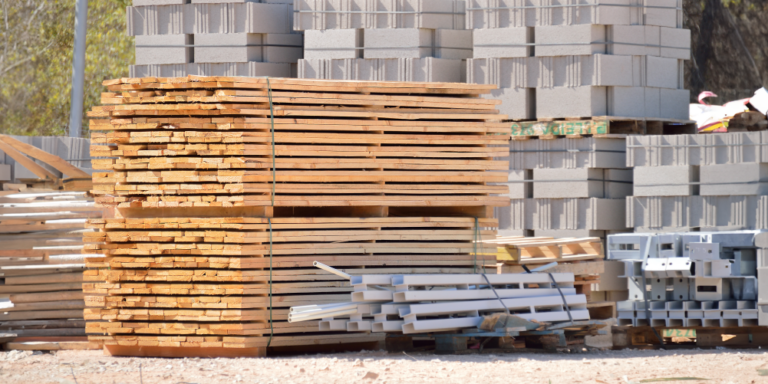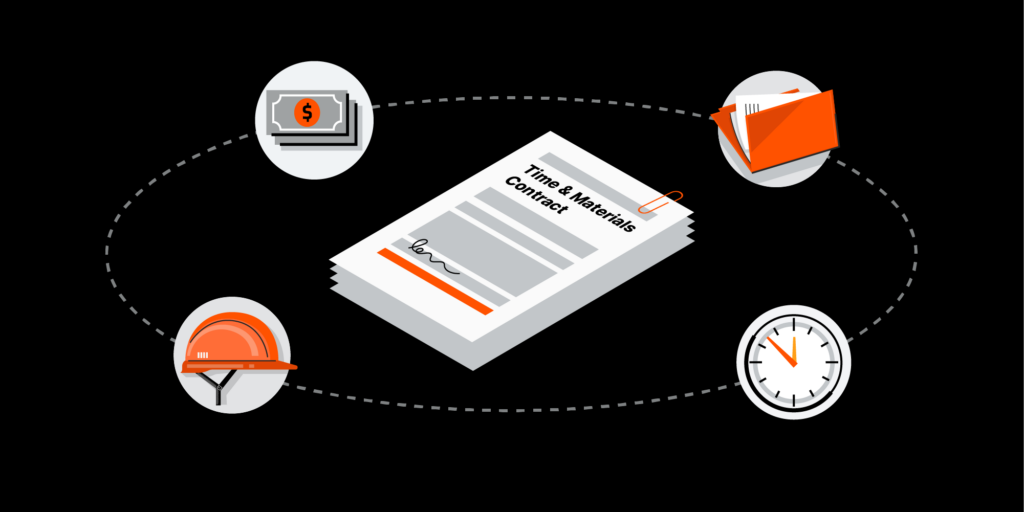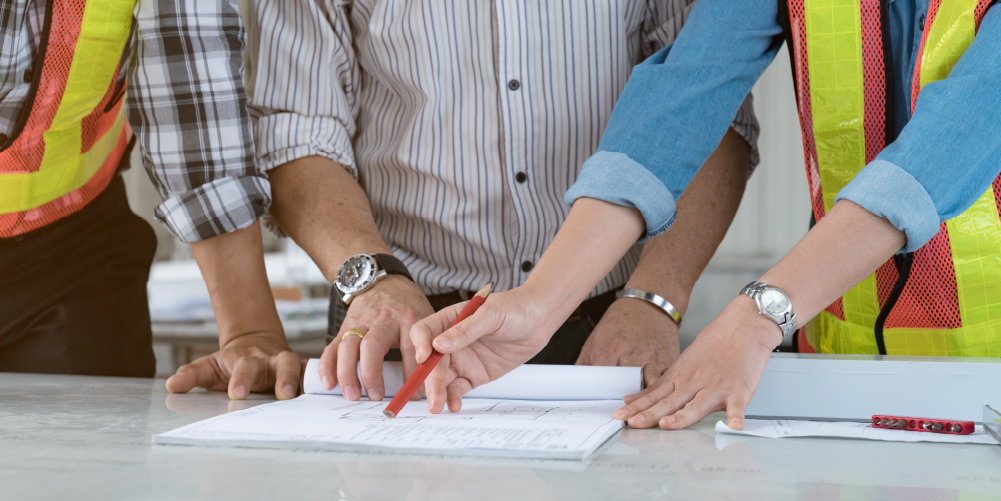— 4 min read
What is a construction material takeoff?


Last Updated Sep 10, 2025

Kristen Frisa
Contributing Writer
111 articles
Kristen Frisa is a contributing writer for Procore. She also contributes to a variety of industry publications as a freelance writer focused on finance and construction technology. Kristen holds a Bachelor of Arts in Philosophy and History from Western University, with a post-graduate certificate in journalism from Sheridan College. She lives in Ontario, Canada.

Tom Scalisi
Contributing Writer
59 articles
Tom Scalisi is a writer with over 15 years of experience in the trades. He is passionate about educating contractors and specialty contractors about the best practices in the industry. He has seen first-hand how education, communication, and preparation help construction professionals overcome challenges to build a strong career and thriving business in the industry.
Last Updated Sep 10, 2025

In construction, a takeoff is the process that contractors use to figure out the exact quantity of materials needed for a specific project. Also known as a material takeoff or a quantity takeoff, construction takeoff is an important step in producing an accurate estimate of a project’s cost.
A takeoff can be done by hand or using software, but it’s critical to get an accurate count of materials before submitting a tender— or you could be stuck overpaying for materials and cutting into your profit.
Keep reading for more details about how to perform a construction takeoff — and best practices for the most accurate results.
Table of contents
How to Perform a Takeoff
The ultimate goal of a material takeoff is to create a detailed list of the exact quantities of materials required for a project. The name takeoff comes from the process of counting by hand — a contractor would “take off” items one by one from a construction drawing and record them in a list.
Whether you perform a takeoff by hand or using software, the basic process is the same:
Consult the construction documents.
By referencing the plans and specs, contractors can see which type of materials the owner has requested.
Itemize the necessary materials.
Contractors will make a list of all of the items required for the project — or the materials needed for their specific trade.
Count or calculate quantities.
Finally, contractors will systematically work through the drawings and take off each item from the drawings as they add it to their list of quantities.
Essentially, whoever performs a construction takeoff ensures that any item required to complete the building is listed and quantified. For example, an electrician would determine materials requirements for conduit, wiring, receptacles, switches, and more.
While the process itself is straightforward, one complicated aspect is that contractors need to record various materials in different ways.
For example, material takeoffs can be quantified by:
Count
Individual items like standard wall studs, light fixtures, outlets, air handlers, windows, doors, and other similar items are simply counted.
Area
Flooring, drywall, sheathing, roofing, and similar items are calculated by square metres.
Volume
Concrete, sand, gravel, paint, and similar items are calculated by cubic meter or cubic yard.
Length
Lumber, conduit, wire, ductwork, and similar items are typically listed by linear meter or linear yard.
Each trade will have specific materials and items that are important to quantify while performing the takeoff. An accurate takeoff will help contractors and subcontractors create a better estimate and tender properly for projects.
Construction Material Takeoff vs. Construction Estimate
When people refer to takeoff, they’re usually talking specifically about coming up with a quantity of materials required for a project — that’s why this process is frequently called a “quantity takeoff” or a “material takeoff.” On the other hand, a construction estimate uses the quantities from the takeoff as well as current material prices to determine the total cost for the required materials.
Some people use the word takeoff to mean the entire process of building an estimate, but, generally, you can think of this as two separate processes:
- First, estimators perform a material takeoff to get an accurate list of the exact items and quantities needed for a project.
- Second, estimators build an estimate by determining current materials pricing as well as calculating other costs, like labour, equipment or travel.
While these two processes are closely related, the most important goal of a takeoff is simply to provide an accurate count of materials.
That said, the takeoff process has become more closely tied to the estimating process due to the widespread use of takeoff software.
Construction Takeoff Software
Software has streamlined many aspects of the construction industry, and takeoffs are no exception. Using estimating software with automated takeoff tools can help improve speed and accuracy. Essentially, this software enables contractors to load construction drawings and use tools to measure, count and itemize the required materials.
While the takeoff isn’t the most glorious part of a construction project, it’s easily one of the most important. Contractors that base their estimates on inaccurate takeoffs will have a reputation for materials and timeline overruns. Those who take the time to create the best possible construction takeoff will find they finish on time, within budget and with healthy profit margins.
By streamlining the takeoff process with construction estimating software, accurate measurements and values, a checklist and up-to-date plans, estimators can create spot-on takeoffs for projects.
Categories:
Written by

Kristen Frisa
Contributing Writer | Procore
111 articles
Kristen Frisa is a contributing writer for Procore. She also contributes to a variety of industry publications as a freelance writer focused on finance and construction technology. Kristen holds a Bachelor of Arts in Philosophy and History from Western University, with a post-graduate certificate in journalism from Sheridan College. She lives in Ontario, Canada.
View profile
Tom Scalisi
Contributing Writer
59 articles
Tom Scalisi is a writer with over 15 years of experience in the trades. He is passionate about educating contractors and specialty contractors about the best practices in the industry. He has seen first-hand how education, communication, and preparation help construction professionals overcome challenges to build a strong career and thriving business in the industry.
View profileExplore more helpful resources

The 5 Key Types of Construction Contracts
There are five common types of construction contracts: lump sum (or fixed price), time and materials (T&M), unit price, guaranteed maximum price (GMP), and cost-plus. Each of these contract types...

Time and Materials (T&M) Contracts in Construction: Guide for Contractors & Project Owners
A time and materials (T&M) contract is a construction agreement where the project owner pays the contractor for all material and labour costs on a project as well as contractor...

Invitation to Tender (ITT) Explained for Construction
An invitation to tender (ITT) is an official document issued by a project owner that targets contractors to solicit tenders for a construction project. The ITT provides all tenderers with...

How Construction Feasibility Studies Guide Building Decisions
There are countless steps taken by stakeholders to ensure the success of a construction project — and many questions that need answering before getting started. Can the project be built...